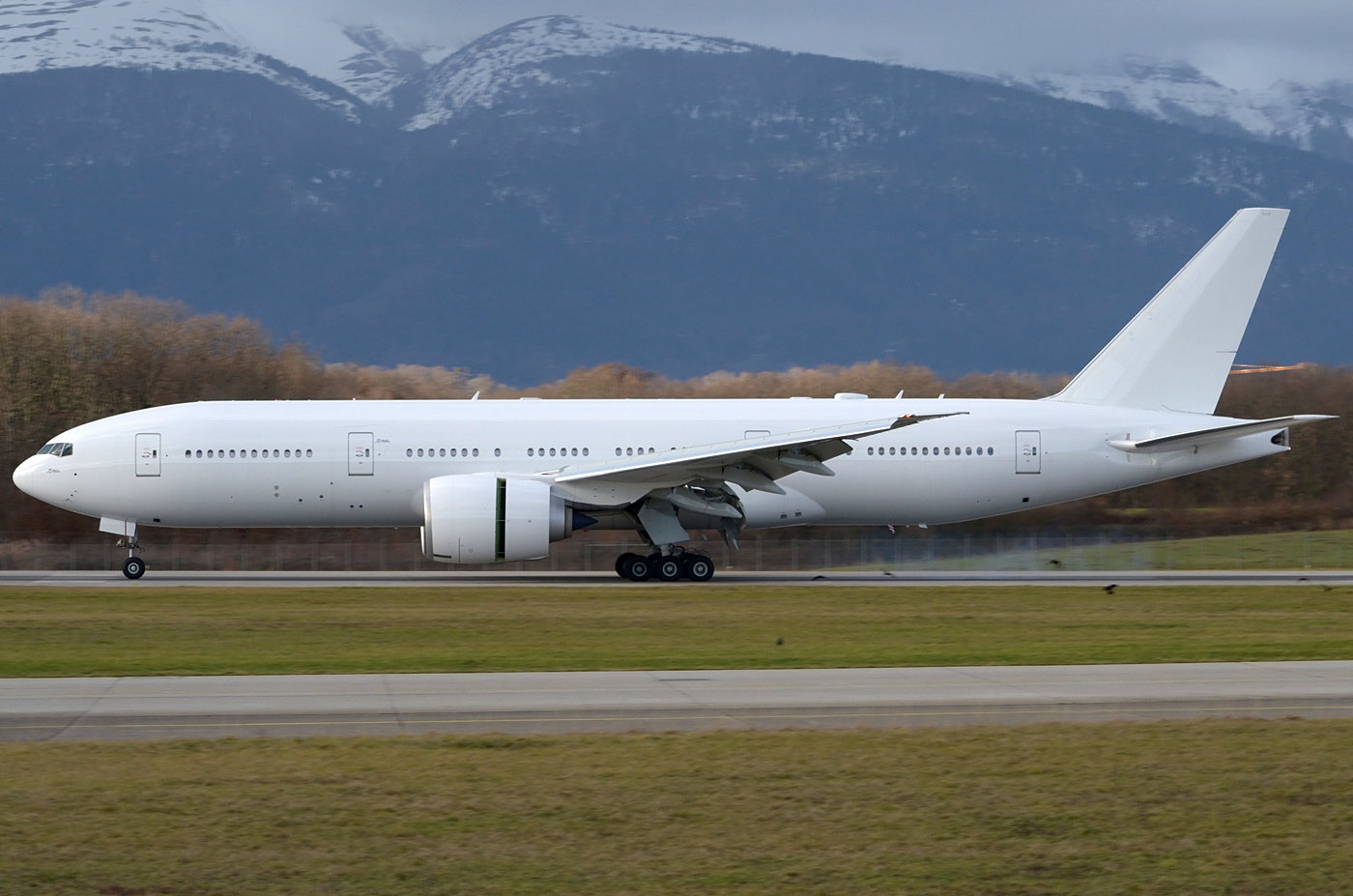
The Boeing 777-200 is a family of long-range wide-body twin-engine jet airliners developed and manufactured by Boeing Commercial Airplanes. It is the world's largest twinjet and has a typical seating capacity for 314 to 396 passengers, with a range of 5,240 to 8,555 nautical miles (9,704 to 15,844 km). Commonly referred to as the "Triple Seven", its distinguishing features include the largest-diameter turbofan engines of any aircraft, six wheels on each main landing gear, fully circular fuselage cross-section, and a blade-shaped tail cone. Developed in consultation with eight major airlines, the 777 was designed to replace older wide-body airliners and bridge the capacity difference between Boeing's 767 and 747. As Boeing's first fly-by-wire airliner, it has computer-mediated controls. It was also the first commercial aircraft to be designed entirely with computer-aided design. The 777 is produced in two fuselage lengths as of 2014. The original 777-200 variant entered commercial service in 1995, followed by the extended-range 777-200ER in 1997. The initial 777-200, -200ER and -300 versions are equipped with General Electric GE90, Pratt & Whitney PW4000, or Rolls-Royce Trent 800 engines. The extended-range 777-300ER and ultra long-range 777-200LR variants entered service in 2004 and 2006 respectively, while the 777F, a freighter version, debuted in February 2009; these variants all feature high-output GE90 engines and extended raked wingtips. The 777-200LR is the world's longest-range airliner, able to fly more than halfway around the globe, and holds the record for the longest distance flown non-stop by a commercial aircraft.
Technical information
|
Passenger capacity |
up to 280 (3 or 4 class) |
|
Length |
63.7m (209 feet 1 inches) |
|
Wingspan |
60.9m (199 feet 11 inches) |
|
Height |
18.5m (60 feet 9 inches) |
|
Engines |
2× Rolls Royce Trent 800 or 2× General Electric 90 |
|
Maximum speed |
950km/h (590mph, Mach 0.89) |
|
Range |
6,857km (4,261 miles) |
Specifications
| 777-200ER | 777-200LR | |
| Weight | ||
| Maximum take-off weight (kg) | 263 080 - 297 560 | 322 050 - 347 800 |
| Maximum landing weight (kg) | 208 650 - 213 190 | 220 900 - 223 170 |
| Operating empty weight (kg) | 135 600 - 143 800 | 155 580 - 156 030 |
| Maximum zero fuel weight (kg) | 195 000 - 199 580 | 206 840 - 209 110 |
| Maximum payload (kg) | 51 250 | 50 850 |
| Standard fuel capacity (litres) | 171 170 | 202 500 |
| Performance | ||
| Range with max payload (km) | 10 750 - 14 300 | 15 040 - 17 450 |
| Cruise speed (km/h) | 905 | 905 |
| Maximum speed (km/h) | 945 | 945 |
| Maximum operating altitude (m) | 13 100 | 13 100 |
| Take-off field length (m) | 3 000 | 2 900 |
| Landing field length (m) | 1 630 | 1 700 |
| Engines | GE GE90-94B, 2 x 93700 lb P&W PW4090, 2 x 90100 lb R-R Trent 895, 2 x 93250 lb |
GE GE90-110B1, 2 x 110000 lb |













